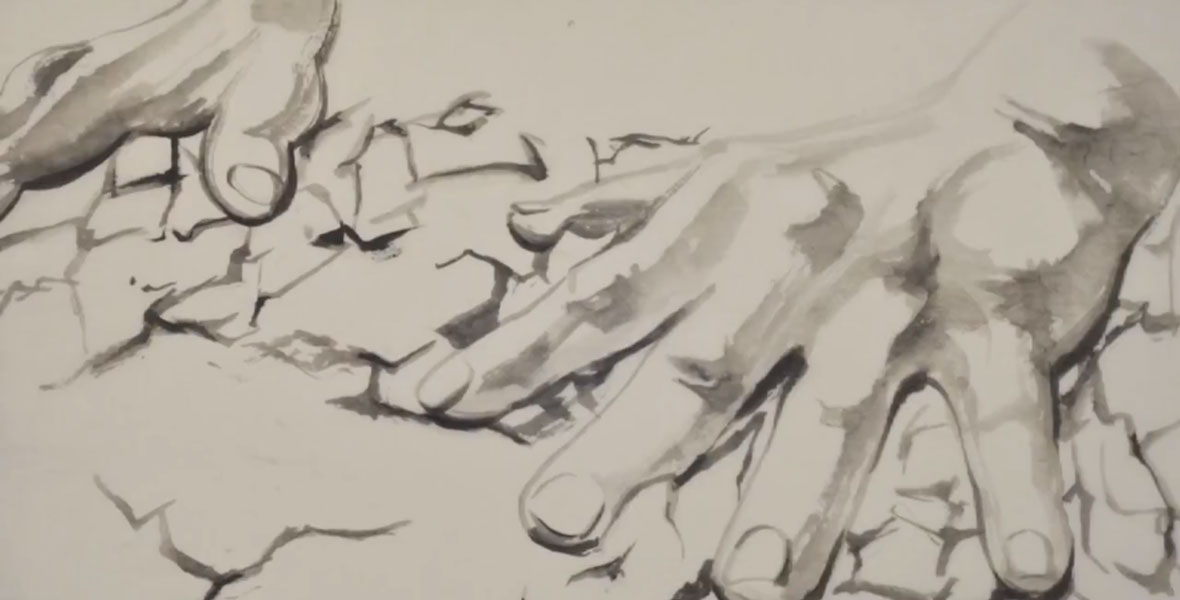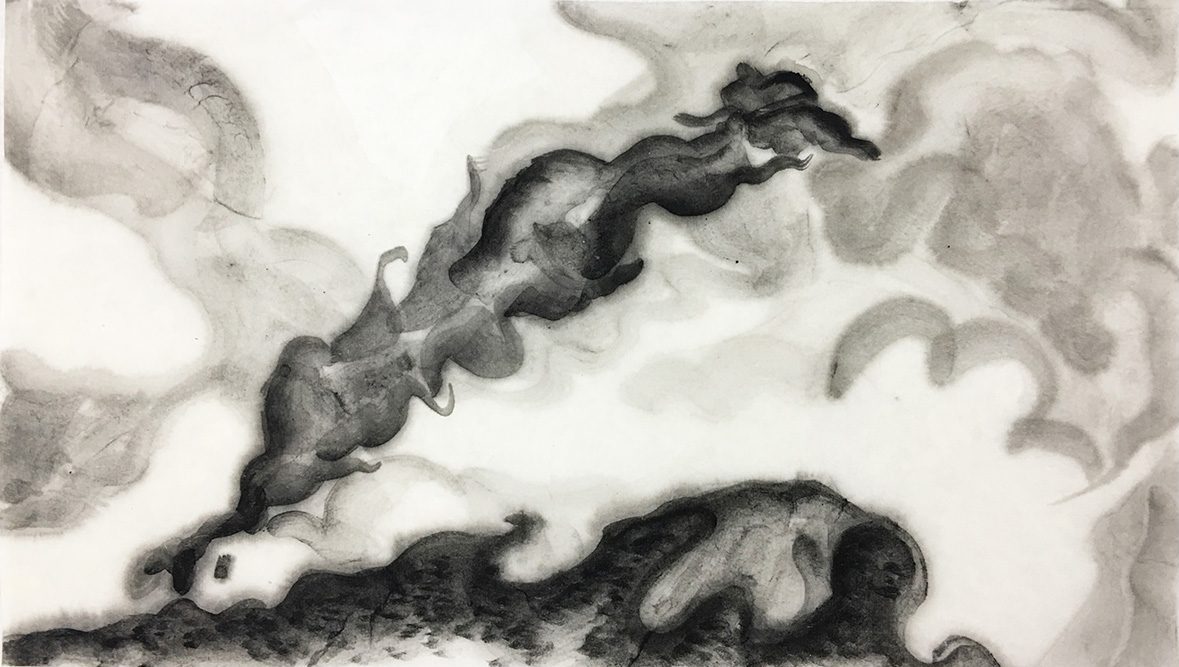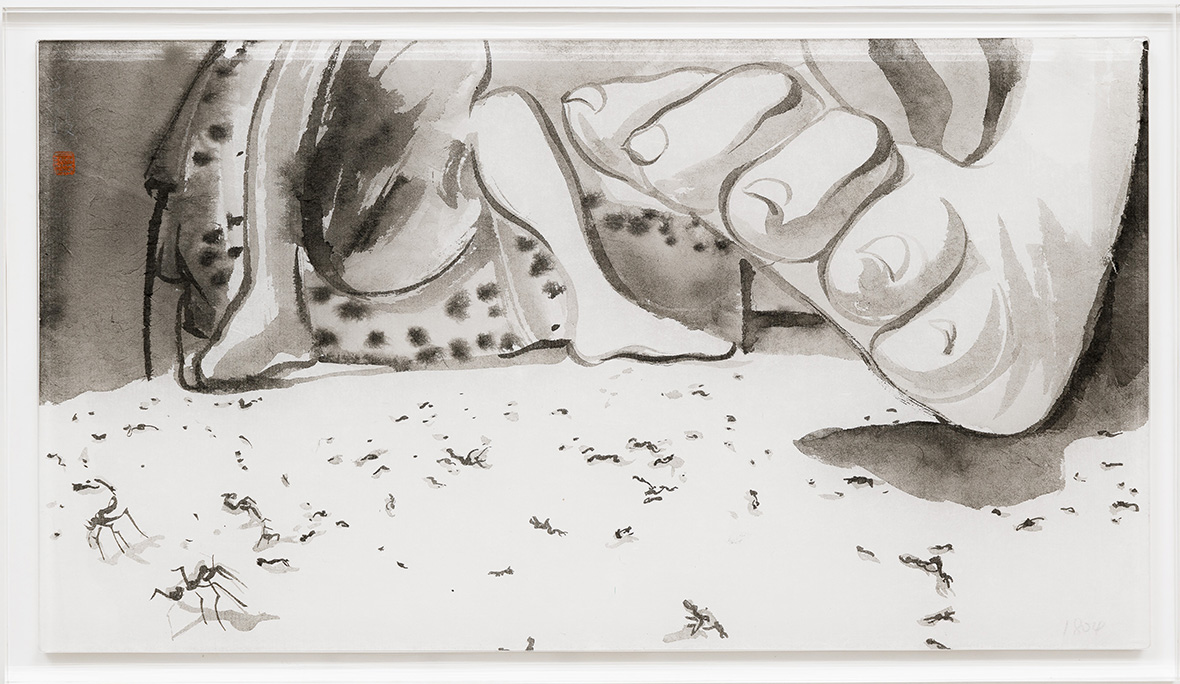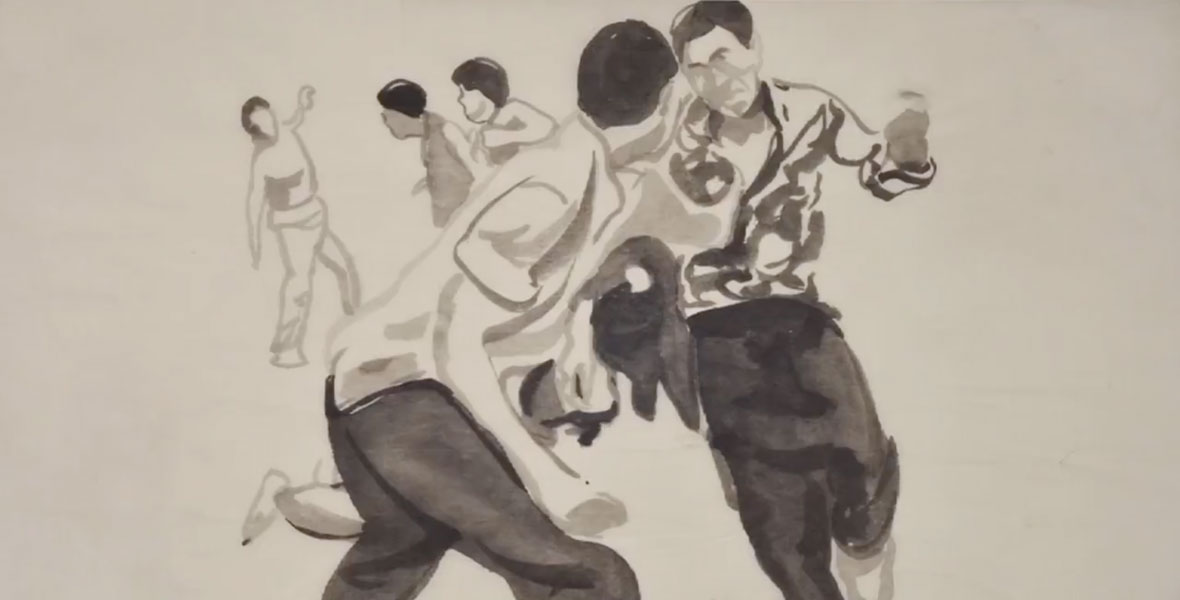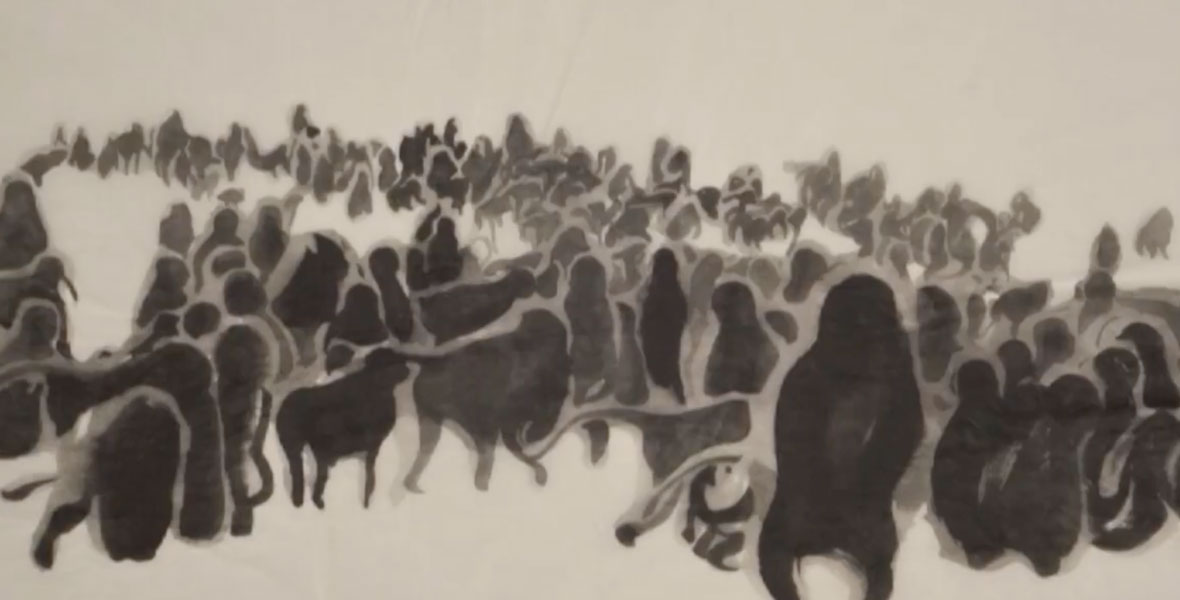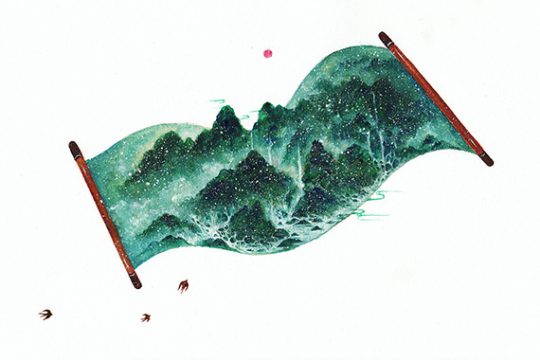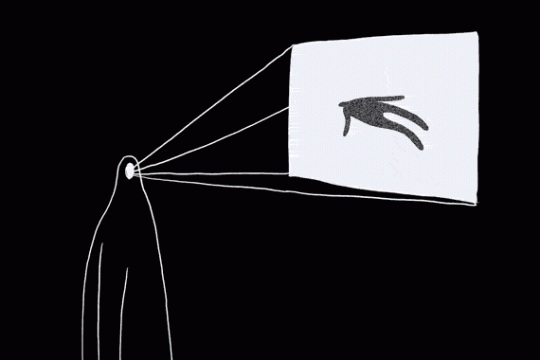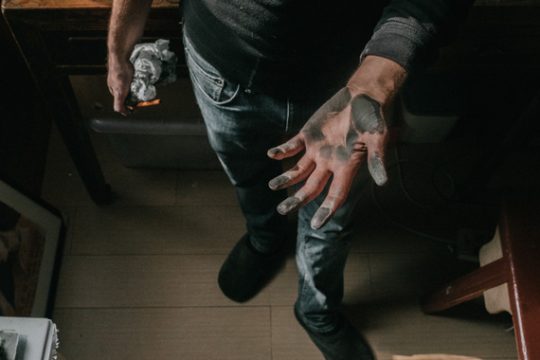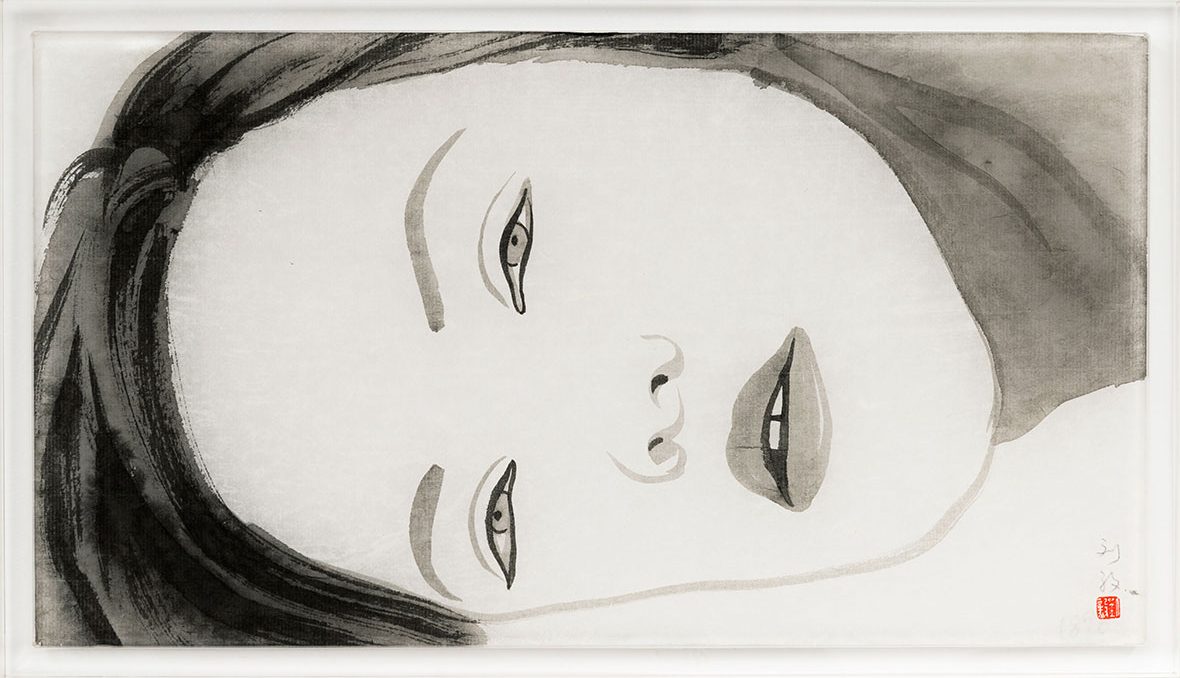
Dreams layer sorrow atop endless sorrow.
In dreams everything has a sorrowful tinge.
In dreams I meet all my sorrows yet still push onward.
Dreams vanish upon waking, but sorrows remain.
These lines appear in When I Sleep, My Dreams Come, a new work by Liu Yi, who is currently an artist in residence at the Abbaye Royale de Fontevraud, in France’s Loire Valley. Born in 1990, Liu most often works in inkwash animation, a medium that incorporates the elegance and deftness of traditional Chinese brushwork and requires a considerable time and effort.
Maybe it’s the soft fluidity of ink, maybe it’s the artist’s natural sensitivity and care, but Liu’s works have a dreamlike quality that draws the viewer into the strokes and lines of her page.
梦将悲伤无限制的叠加,梦里的东西都带着悲伤的情绪
在梦里我遇见了所有悲伤,但是我依然愿意前往
梦在醒后逐渐消退,而悲伤的感觉一直在
这是最近在法国 Abbaye Royale de Fontevraud 驻留的艺术家刘毅为新作《当我睡着时,梦来了》写下的感悟。生于 1990 年的刘毅,最常用的创作媒介是水墨动画——这种融合了中国水墨画优美灵动的特质、制作起来又相当耗时费力的创作方式。
或许是沾染了水墨特有的温柔水汽,或许是创作者天生的敏感和细腻,刘毅的作品恰恰给人以“梦”的错觉,仿佛就游走在她毛笔勾勒的线条画里。
Liu first encountered inkwash painting as a child, when her curiosity was awakened by the ink seeping into the paper in the brush’s wake. The idea for inkwash animation came in college, while she was completing a storyboarding assignment.
While Liu goes about making each of her films in a different way, they all involve hand-painted scenes and stop-click animation. “I have to make the whole film myself from start to finish, so the animation process is exceedingly slow. A five-minute short takes at least a year to complete,” she says. “I want to make people aware of their everyday surroundings in a new way, to get them to pay attention to their everyday experiences, to awaken them to their own world.”
初初接触水墨画的时候,刘毅还是个孩子,水墨在纸张上氤氲开去的笔法,让她分外好奇。而大学时的一次画分镜脚本的经历,让她拾起了做“水墨动画”的念头。
虽然每个片子的创作方法不一样,但就刘毅目前的几个作品来说,都是通过她逐帧手绘的方式去做的,“一个片子的开始到结束都是需要自己亲力亲为,所以动画的制作是非常慢的,一个 5 分钟左右的短片,最快也要花一年多时间去完成。”刘毅说。“我想以一种新的方式让人们意识到自己的日常环境,关注日常的感受,引起对自身世界的感悟。”
Excerpt of Chaos Theory (2014) from Liu Yi’s Thrown into the Wind exhibition
《混沌记》(片段),2014 / 来自刘毅“扔到风里去”个展
无法观看?前往腾讯视频
In her previous project, Chaos Theory, Liu painted the whirls and eddies of the wind. “It whips by at a hundred miles an hour, carrying away what was once etched in our hearts and the things we solemnly swore. But it can never return a balloon blown up and released from our hands,” she says. The ungraspable wind and elusive dreams are precisely what Liu Yi looks to share with viewers. How do memories and states with such immediacy and dynamism find us, and how do they influence us?
“If we can’t avoid becoming balloon-blowers, then I want to thank how the wind gives us the gift of dispersal,” she says.
在她此前的《Chaos Theory》里,她描绘风兜兜转转的模样,“它总是带走我们一度比较刻骨铭心,或是信誓旦旦的言语事件,时速百里。但它又从来不会将吹入空中的气球送回来。”刘毅说。而不可捕捉的风、难以琢磨的梦,正是刘毅不断在通过作品传递给大家的东西——这种即时性的、动态的记忆和情境,是如何与我们邂逅,又如何影响着我们。
“如果我们不可避免的成为了吹气球的人,那么,我要感谢风所赐予的烟消云散。”她说。

Liu has a cool, detached attitude toward her future work. “Animation is always an experiment and an exploration, whether you’re creating something or just expressing yourself,” she says. “All sorts of challenges and problems can arise at each stage. It’s like a video game with different levels: you go through level after level, and as you acquire more weapons and items, you perhaps become a little more skillful.”
对于未来的创作,刘毅的心态也很淡然和超脱:“动画的创作一直需要实验和探索,每个阶段都会出现不同的挑战和问题,就像闯关游戏,一次次通关,直到自己领到那些武器,宝藏之后,也许以后会更游刃有余一些吧。”刘毅如是说。
